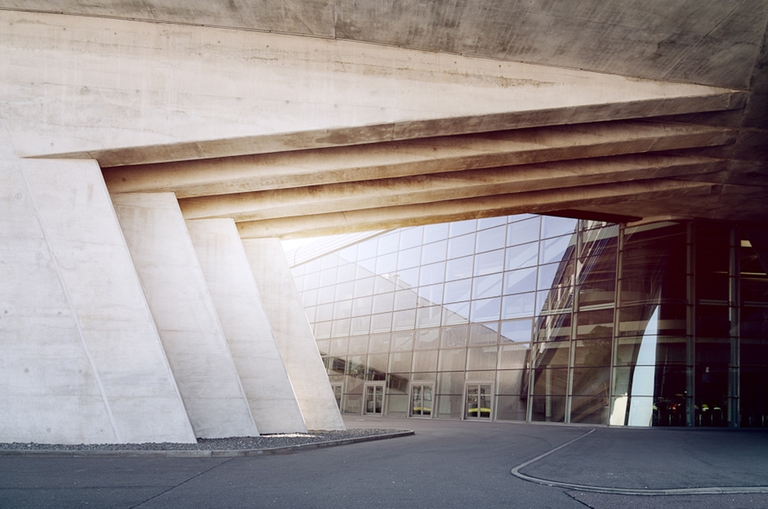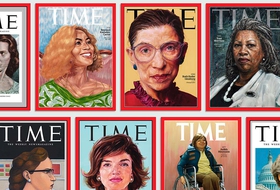
Homecast is a podcast series recorded in quarantine in which creatives from around the world share their lived experiences of these unique circumstances. Creator Giacomo De Poli tells us why this collective diary was needed now more than ever.
Both criticised and praised, the award-winning and undisputed world archistar, Zaha Hadid, died following a heart attack on 31 March in a Miami hospital, where she was being treated for bronchitis. The news has been confirmed in the evening by Zaha Hadid Architects, one of the world’s most important studios where 246 architects are employed:
Both criticised and praised, the award-winning and undisputed world archistar, Zaha Hadid, died following a heart attack on 31 March in a Miami hospital, where she was being treated for bronchitis. The news has been confirmed in the evening by Zaha Hadid Architects, one of the world’s most important studios where 246 architects are employed: “It is with great sadness that we have confirmed that Dame Zaha Hadid died suddenly in Miami in the early hours of this morning”.
She became the first woman to be awarded the prestigious Pritzker Prize in 2004, she was honoured (twice) with the Stirling and with the RIBA (Royal Institute of British Architects) Gold Medal, and was appointed Dame Commander of the Order of the British Empire 2012. Hadid was born in Baghdad in an Iraqi middle-class family. She studied mathematics at the American University of Beirut before starting, in 1972, her journey into the world of architecture at the Architectural Association School of Architecture, London. In the British capital, Hadid started to design and realise innovative works all over the world, including The Peak in Hong Kong (1983), the Kurfürstendamm in Berlin (1986), and the Cardiff Bay Opera House in Whales (1994).
Her visionary works – a synthesis between architecture, art and design – reached each corner of the globe: from Hong Kong to Germany and Azerbaijan. She also designed the London Olympic Aquatic Centre, where the London Olympic and Paralympic Games took place in 2012, the Bersiegel Ski Jump, Innsbruck, Austria, the Guangzhou Opera House, China, the MAXXI contemporary museums in Rome, and the Citylife building in Milan, Italy. With her multifaceted, restless personality, she spent her all life looking for new things to experiment: during her career, Hadid designed a collection of shoes for Lacoste, collaborated with Karl Lagerfeld and designed for Louis Vuitton, Chanel, and Swarovski. “The world of architecture has lost a star today,” said Riba President Jane Duncan. “Visionary and highly experimental, her legacy despite her young age, is formidable. She leaves behind a body of work from buildings to furniture, footwear and cars, that delight and astound people all around the world”.
President of the @RIBA @JaneDuncanPRIBA talks fondly about her heroine #ZahaHadid and her legacy pic.twitter.com/m2E1Ovysyr
— Rawan Hijazi (@rhijazi) 31 marzo 2016
In a world dominated by men, Hadid was criticised by those saying her works sacrifice functionality for aesthetics. Sometimes, as happened with the 2020 Tokyo Olympic Games stadium, her projects were rejected for being too extreme or expensive. Recently, she was part of a controversy linked to the construction of the Al Wakrah stadium, Qatar, for the 2022 FIFA World Cup.
With her rebel and passionate nature – she was nicknamed Lioness –, Hadid never showed self-criticism: “Yes, I succeeded,” she told to French architecture journal Courrier de l’Architecte in 2012. “But the road was not easy or rosy. Initially, I was like a machine: I used to study and design day and night”.
Her futuristic works were achieved thanks to innovative technologies, unexpected architectural shapes, sinuous curves and fragmented geometry, elements typical of deconstructionism. She aimed to reach a new, unique, and full-of-personality aesthetic.
When she was asked “Why there are no straight lines and 90-degree angles in your work”, she used to answer “Basically, because my life isn’t a grid. If you look at nature, nothing is regular or flat, but all people think such places are pleasant and relaxing. I think we should try to achieve this kind of architecture in our cities, as there are far too many horrible, cheap buildings”.
Siamo anche su WhatsApp. Segui il canale ufficiale LifeGate per restare aggiornata, aggiornato sulle ultime notizie e sulle nostre attività.
![]()
Quest'opera è distribuita con Licenza Creative Commons Attribuzione - Non commerciale - Non opere derivate 4.0 Internazionale.
Homecast is a podcast series recorded in quarantine in which creatives from around the world share their lived experiences of these unique circumstances. Creator Giacomo De Poli tells us why this collective diary was needed now more than ever.
Zaha Hadid is the most famous woman surrounded by a sea of male celebrity architects, or starchitects. She has gained worldwide recognition by challenging architectural traditions with innovative but egocentric projects that have generated many a controversy because she often sacrifices functionality for the sake of designing shapes that express her trademark aesthetic. If [architecture]
Since 1851, every five years, world’s cities host a unique event for six months: the universal exposition. In 2015 it’s the capital of Lombardy’s turn, which on 1st May has opened the door of Expo 2015. As in any other world exposition, since the first one held in London, the main attractions are
Time magazine’s 100 Women of the Year project sheds light on influential women’s stories, from Amelia Earhart to Greta Thunberg. A selection of some of the greats for International Women’s Day.
Leaving cliches behind, beauty and sexuality in old age are widely unexplored topics. Photographer Arianne Clément tells why she chose to shed light on this universe.
Un violador en tu camino – the rapist is you – is an anthem protesting the impunity of gender-based violence. It began in Chile and has become a global flash mob, bringing people to the streets and resonating all over the world.
The Oxford English Dictionary has chosen “climate emergency” as 2019’s Word of the Year because of its effectiveness in communicating a sense of urgency in the fight against global warming.
Filmmaker Dhondup Wangchen was imprisoned by the Chinese government for his documentary condemning the Tibetan condition. He tells us how he continues to fight for his people even after the traumas faced.
To mark the release of Anthropocene: The Human Epoch, we interviewed photographer and co-director Edward Burtynsky, who told us the story behind the documentary.








